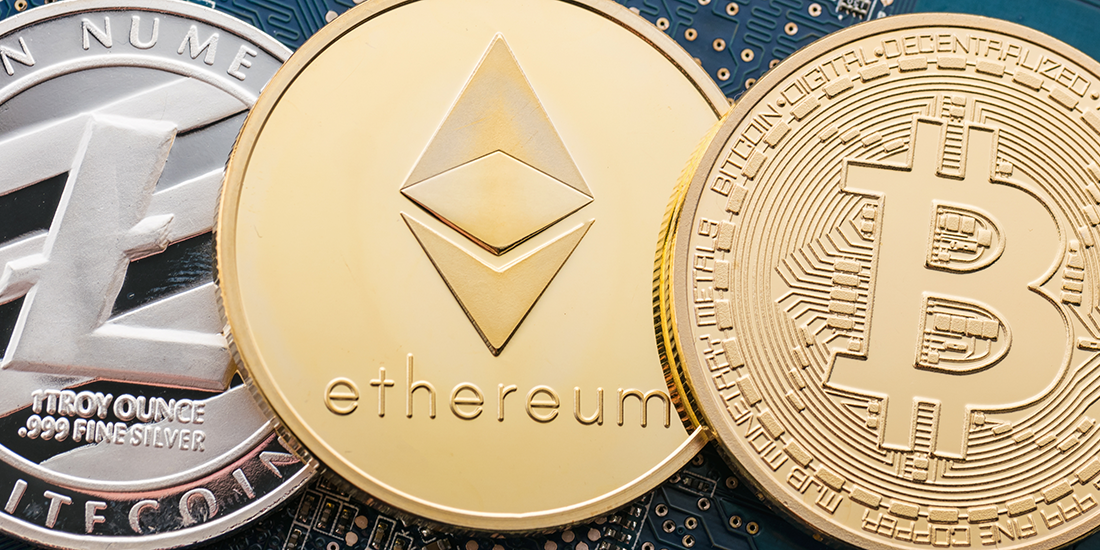
The Weekend Series: Bitcoin, blockchain and bamboozlement – making sense of cryptocurrency
You’ve heard the buzz, read about it online and seen its logos pop up at shops and eateries, but what do you really know about Bitcoin? If you are like us, you are as clueless as a camel at the North Pole. Cryptocurrency has been increasing in prominence since being invented in 2009, but to us laypeople it hasn’t exactly become easier to understand. That being said, quite a few people are making a big deal out of this new technology, so we decided it would be a good idea to figure out what the heck it’s all about and see if we can break it down in a handy, easy-to-digest format.
So enlighten me, genius – how did cryptocurrency begin?
The concept of digital currency has been around for a good while – decades, in fact. There have been several attempts to create a reliable form of digital currency, though all early attempts hit the same roadblock – they were unable to solve the issue of double spending, which is the occurrence of spending the same amount of money twice without relying on a centralised entity (such as a bank or governing body) to oversee all transactions and records. The idea of digital currency that didn’t rely on a centralised server was thought to be impossible until a mysterious entrepreneur or group operating under the pseudonym Satoshi Nakamoto cracked the case wide open. He, she or they created a peer-to-peer network that could transfer electronic currency and solve the issue of double spending using a decentralised system, where the network itself was responsible for creating an absolute consensus across each transaction. Bitcoin was the first cryptocurrency to be created from this new process.
All right. So, what is cryptocurrency, exactly?
Breaking it down to brass tacks, cryptocurrencies such as Bitcoin are a medium of exchange – electronically transferrable units that exist independently of a central authority. That means there is no bank or organisation overseeing each and every transaction. Each transaction uses encryption and cryptography to ensure the transactions are secure and to control the creation of more units of the digital currency. These transactions aren’t secured by people, but by math. Transactions are approved by miners, which form a large part of cryptocurrency’s overall operational process.
Stop! Slow down, you’ve lost me. Miners? Like, the dudes that dig underground?
No, not exactly. ‘Miners’ is the term used to refer to the network of computers or nodes that work to validate transactions in place of a central body. Their job is to take a transaction, validate it based on the user’s private key algorithm, mark it as approved and spread it across the network to be updated in the online ledger, or blockchain. This task of decrypting the cryptographic algorithm requires a bit of computing power and resource-intensive software to mathematically solve equations and impede fraud, so miners are rewarded for the proof-of-work effort of decoding and approving transactions with Bitcoins. This is how new Bitcoins are created, hence the term mining. It is very difficult to abuse this process when mining is decentralised, hence is notion that Bitcoin usage is more secure.
Okay, I’ll bite. What the heck is a blockchain?
The blockchain is the heart of every form of cryptocurrency and what makes it so legit. Bitcoin records every single transaction that ever happened in a huge ledger, called the blockchain. Verified transactions are bundled together to form a new link in the existing blockchain, which is permanent and unalterable. The entire history of Bitcoin is visible in the blockchain and everyone can see the blockchain, though no names are listed, just the unique user code of individuals, which is akin to a PO box – users can essentially send and receive Bitcoin anonymously.
So, one user transfers some cryptocurrency to another person in any given transaction, which is secured using an algorithmic key, which is then approved by a network of computers and entered into a big list of all transactions that ever were. Is that right?
Yep, now you’re getting it!
So why is everyone so hyped about cryptocurrency?
There are a few properties inherent in this form that make it exciting and also some potential downsides. First of all, transactions and accounts aren’t connected to real identities – you receive all Bitcoins through addresses or a chain of approximately 30 characters. This means that your funds and address are protected by near impossible to break cryptographic safeguards. The downside to this is that if you lose your private key, you can’t access the Bitcoins stored in the digital wallet ever again. Transactions can also be close to instantaneous, especially compared to regular bank-controlled transfers. The network can approve transactions in minutes and send those funds anywhere in the world. There is no central body that controls the flow of new money and the flow of new Bitcoin is controlled by an algorithm, with its value is based solely on supply and demand. Because the overall supply of Bitcoin is fixed and the demand varies, Bitcoin’s value can be volatile compared to a ‘stable’ currency, such as the dollar. Using Bitcoin can be difficult in hospitality and retail settings as set prices of goods represented in Bitcoin would be constantly fluctuating, which is one hurdle to its widespread use as a currency.
If Bitcoin is just one form of cryptocurrency, how many kinds are there?
Heaps, but Bitcoin remains the most popular form of cryptocurrency available. The others range in scope and popularity, and several have their own wrinkles in terms of their operation process. Other forms include Ethereum, Ripple, Litecoin and Monero.
Okay, I’m sold. How do I get started?
Well, we at The Weekend Edition can’t really give you directions on how to make the switch to cryptocurrency. We suggest asking your financial advisor if this is something for you and the best way to get started. It’s a brave new world and we’re very excited to see how Bitcoin and the like will shape how we save, spend and invest in the future.




